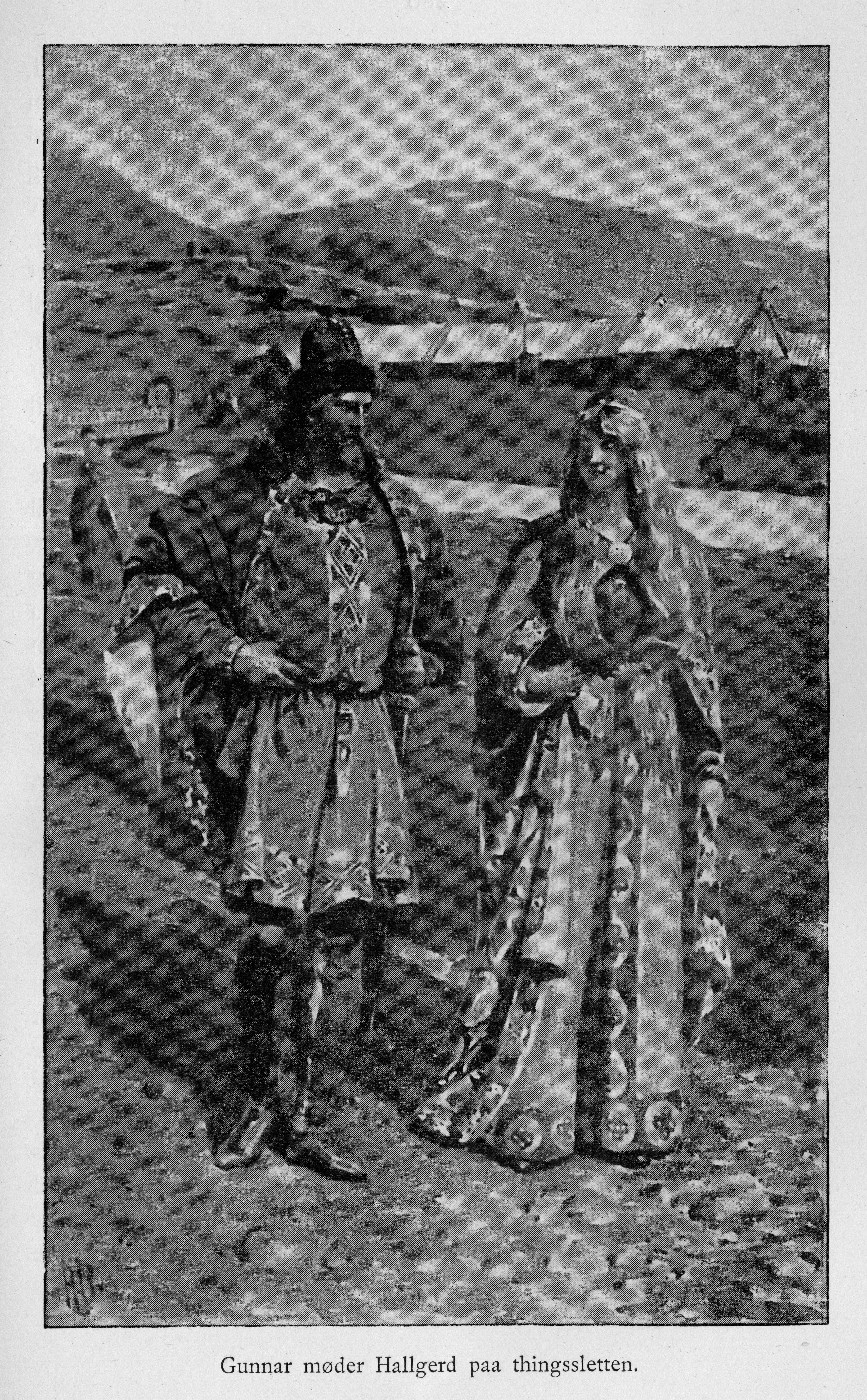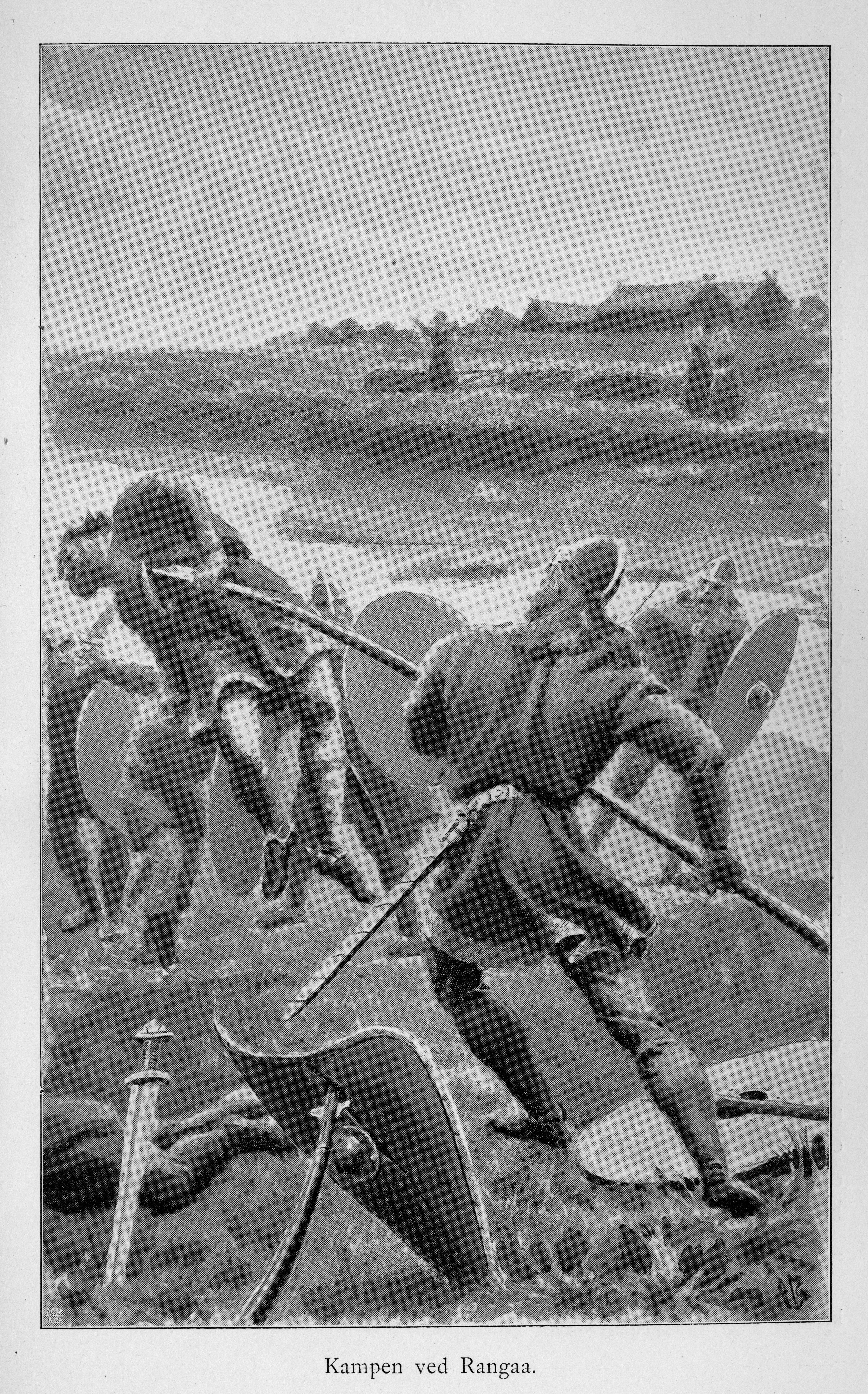Gunnar Hámundarson on:
[Wikipedia]
[Google]
[Amazon]

 Gunnar Hámundarson () was a 10th-century
Gunnar Hámundarson () was a 10th-century
Full text of ''Njáls saga'' with English translation
Þorleifur Hauksson reads "Gunnarshólmi." 5:06; 3.3Mb
Gunnarr Hámundarson
Poetry attributed to Gunnar in ''Njáls saga'' {{DEFAULTSORT:Gunnar Hamundarson Icelandic male poets Viking warriors 10th-century Vikings Year of birth unknown Year of death unknown 10th-century Icelandic poets Goðar

 Gunnar Hámundarson () was a 10th-century
Gunnar Hámundarson () was a 10th-century Iceland
Iceland is a Nordic countries, Nordic island country between the Atlantic Ocean, North Atlantic and Arctic Oceans, on the Mid-Atlantic Ridge between North America and Europe. It is culturally and politically linked with Europe and is the regi ...
ic chieftain
A tribal chief, chieftain, or headman is a leader of a tribe, tribal society or chiefdom.
Tribal societies
There is no definition for "tribe".
The concept of tribe is a broadly applied concept, based on tribal concepts of societies of weste ...
. He lived in Hlíðarendi in Fljótshlíð and is probably better known as Gunnar of Hlíðarendi (). He features prominently in the first half of Njáls saga
''Njáls saga'' ( ), also ''Njála'' ( ), or ''Brennu-Njáls saga'' ( ) (Which can be translated as ''The Story of Burnt Njáll'', or ''The Saga of Njáll the Burner''), is a thirteenth-century Icelandic saga that describes events between 960 a ...
, which tells of the chain of events ultimately leading to his death in battle.
He was married to Hallgerðr Höskuldsdóttir of Höskuldsstaðir in Laxárdal in Dalasýsla
Dalasýsla (, ) was one of the pre-1988 traditional counties of Iceland, located in the Western Region of the country. Its only town is Búðardalur.
The county had a rich history dating back to the first settlers of Iceland
Iceland i ...
, who was known as Hallgerðr langbrók ("Hallgerður longpants"). He was her third husband. It was said that she had killed both her former husbands, but she had in fact only killed the first. Their marriage was considered imprudent by Gunnar's friend Njáll Þorgeirsson, because it was caused by lust and not practicality.
Gunnar the hero
Gunnar was a god-like warrior — he is described as nearly invincible in combat. According to Njáls saga, he was a powerful, athletic man "capable of jumping his own height in full body armour, both back and front". He was a skilled archer, and in close combat his weapon of choice was the '' atgeir'', which scholars consider to have been ahalberd
A halberd (also called halbard, halbert or Swiss voulge), is a two-handed polearm that was in prominent use from the 13th to 16th centuries. The halberd consists of an axe blade topped with a spike mounted on a long shaft. It may have a hook or ...
or glaive of some sort. He was said to have taken this famed weapon in battle from a man named Hallgrímur, while on a Viking
Vikings were seafaring people originally from Scandinavia (present-day Denmark, Norway, and Sweden),
who from the late 8th to the late 11th centuries raided, pirated, traded, and settled throughout parts of Europe.Roesdahl, pp. 9� ...
raid to the island of Eysýsla ( Saaremaa in present-day Estonia
Estonia, officially the Republic of Estonia, is a country in Northern Europe. It is bordered to the north by the Gulf of Finland across from Finland, to the west by the Baltic Sea across from Sweden, to the south by Latvia, and to the east by Ru ...
- see detailed account on that page).
Gunnar was also a skilful stone-thrower, able to hit enemies between the eyes from meters away, and an excellent swimmer. There was supposedly no game at which he had an equal. He was said to enjoy the features of life, being a drinker. His behaviour was always polite, but firm — he gave good advice, and was kind and mild, yet he was not thought of as an intelligent man because of his way of talking. However, Gunnar's wise insights and deep understanding strongly suggested that he was as smart as he was handsome. He was loyal to his friends and kept good company. Gunnar has been called "handsome and beautiful of skin and had a straight nose, turned up at its tip. He was blue-eyed and keen-eyed and ruddy-cheeked with thick lustrous hair, blond and well-combed." He was described as the most beautiful man in the world, and as having no equal.
Gunnar's death
Gunnar was a close friend of Njáll Þorgeirsson of Bergþórshvol and came to him often for advice. Njáll told him not to kill two men of the same family — this would lead to his death. Njáll's prediction proved right. When Gunnar killed two family members of Gissur the White, the family sought vengeance and the men set out to Hlíðarendi to do murder. Njáll advised Gunnar to leave Iceland and head abroad to escape them. Initially, Gunnar intended to depart, but when he saw his homestead from the distance, he was so moved by the beauty of it that he changed his mind and decided to remain behind. This led to the epic battle in which Gunnar was killed. When Þorgrim and a few other grudge-bearing men were scouting around Gunnar's house, Gunnar woke up and stabbed Þorgrim through a gap with his atgeir. Þorgrim returned calmly to his comrades, who asked if Gunnar was home. “Find that out for yourselves, but I am sure of, that his atgeir is home,” he said, and then fell down dead. At first, Gunnar managed to fight off his numerous attackers with his masterful archery. When his bowstring broke in close quarters combat, he asked his wife Hallgerður for hair from her head to mend the bow. Gunnar had slapped her previously, when he discovered his wife had stolen food from a nearby farm during a famine, and she vindictively refused. He was thus forced to confront his attackers in hand-to-hand combat and was killed as a result.See also
* GuntherReferences
External links
Full text of ''Njáls saga'' with English translation
Þorleifur Hauksson reads "Gunnarshólmi." 5:06; 3.3Mb
Gunnarr Hámundarson
Poetry attributed to Gunnar in ''Njáls saga'' {{DEFAULTSORT:Gunnar Hamundarson Icelandic male poets Viking warriors 10th-century Vikings Year of birth unknown Year of death unknown 10th-century Icelandic poets Goðar